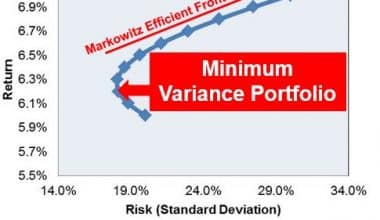It is critical to have a solid understanding of your company’s accounting liquidity. To accomplish so, you’ll need to go a little deeper into liquidity ratios. But what exactly is a liquidity ratio? Also, what is a good liquidity ratio to aim for? Begin with our liquidity ratio definition to learn everything you need to know about the types, calculations, and formulas.
What is a Liquidity Ratio?
A liquidity ratio is a sort of financial statistic for assessing a company’s capacity to fulfill its short-term debt commitments. The statistic assists in determining whether a company’s current, or liquid, assets can be able to cover its current liabilities.
The current ratio, quick ratio, and cash ratio are three common types of liquidity ratios. The current liabilities amount is in the denominator of the equation, and the amount of the liquid assets is placed in the numerator of each of the liquidity ratios.
Types of Liquidity Ratio
#1. The Current Ratio
The current ratio is the easiest to calculate and interpret of the liquidity ratios. The current assets and current liabilities line items on a company’s balance sheet are easily found by anyone. You may calculate the current ratio by dividing current assets by current liabilities.
#2. Quick Ratio
The quick ratio tests liquidity more rigorously than the current ratio. Both have a numerator of current assets and a denominator of current liabilities.
The quick ratio, on the other hand, only takes into account a subset of current assets. It takes into account more liquid assets such as cash, receivables, and marketable securities. Because inventory and prepaid expenses are less liquid, they are not part of the calculation. As a result, the quick ratio is a better indicator of a company’s capacity to meet its short-term obligations.
#3. The Cash Ratio
The cash ratio puts the liquidity test to the ultimate test. This metric only takes into account a company’s most liquid assets, which are cash and marketable securities. They are the assets that a firm can use to satisfy short-term commitments the quickest.
The three types of liquidity, current ratio, quick ratio, and cash ratio can be classified as easy, medium, or hard in terms of how stringent the liquidity criteria are.
Formulas for Most Commonly used Types of Liquidity Ratio
Let’s look at some of the most common liquidity ratio formulas:
Current Ratio Formula
The current ratio, also known as the working capital ratio, compares your company’s current assets to current liabilities. Because it focuses on current assets, you must include relatively illiquid assets that may be difficult to convert into cash, such as real estate or merchandise. The following liquidity ratio formula can be used to get the current ratio:
Current Ratio= Current Assets/Current Liabilities
Quick Ratio Formula
The quick ratio, also known as the acid-test ratio, examines whether you can pay off your commitments with quick assets, which are assets that can be converted to cash in 90 days. As a result, quick ratios are a good predictor of short-term liquidity. For your computations, you can use the liquidity ratio formula:
Quick Ratio = (Cash and Cash Equivalents + Marketable Securities + Accounts Receivable) / Current Liabilities
Cash Ratio Formula
Finally, the cash ratio assesses your company’s ability to pay down current liabilities with cash or cash equivalents (i.e., marketable securities, treasury bills, etc.). This means that you should not include any other assets in your computation, such as accounts receivable, inventory, or prepaid expenses. You can calculate your company’s cash ratio using the liquidity ratio formula below.
Cash Ratio=(Cash and Cash Equivalents + Short-Term Investments) / Current Liabilities.
Other liquidity ratio formulas, such as the operating cash flow ratio, may be encountered, but in general, the current, quick, and cash ratios are the only accounting liquidity ratios that you will need to understand.
What Constitutes a Good Liquidity Ratio?
Now that you’ve learned more about the most popular liquidity ratio formulas utilized in the company, consider what kind of results you’d like to see. In a nutshell, a “good” liquidity ratio is more than 1. However, a liquidity ratio of 1 is unlikely to demonstrate that your company is worth investing in. Creditors and investors will often look for an accounting ratio of 2 or 3.
A larger liquidity ratio indicates that your company has a greater margin of safety in terms of its capacity to repay debts. However, it is also crucial to realize that if your ratio is too high, it may signal that you are holding too much cash and are not allocating your capital properly. Instead, you may utilize that money to fund long-term lucrative growth plans or investments.
Furthermore, keep in mind that your accounting liquidity ratios may not be telling you the complete story when seen in isolation. Rather, consider your it as part of a larger picture. If a company has unusually variable liquidity ratios, it may suggest that the company is facing operational risk and financial insecurity.
Liquidity Ratio Interpretation and Analysis
One can compare and interpret the liquidity ratios in various ways. Furthermore, it is dependent on the type of business in some circumstances. In the majority of circumstances, you’ll use the benchmarks to compare financial ratios. The current ratio, for example, has a standard of one. Below one is considered a bad condition, while one or more is considered a good condition. Again, this is dependent on the type of firm. I went into great depth about it in the section on individual ratios.
The ratio average is determined first when compared to the industry average. The ratio of each company is then compared to the industry average. When comparing one company to another, a company in the same industry is used. The chosen one is then used to compute the target company’s ratio.
Benefits of Using Liquidity Ratio Analysis
- It demonstrates how a modern asset-rich firm is.
- It demonstrates how much debt you can pay off using only the funds you have on hand.
- It’s beneficial in determining the company’s liquidity condition.
- It assists in comprehending the company’s strengths.
- It demonstrates how rapidly a business can pay off its debt.
- It’s useful to understand how quickly a company’s inventories can be converted into cash.
- It’s useful to know how much cash/current assets you’ll need if your firm is losing money.
- It indicates the amount of ideal money you have on hand.
- It displays the number of inventories you have in storage.
The Drawbacks of Using Liquidity Ratios Analysis
- It is not a good idea to use the ratio on its own.
- Companies from many industries are represented. As a result, one company’s ratio will not be comparable to another in the same industry.
- Because of accounting standards/methods of inventory valuation, the value of the Ratios may fluctuate.
- Because the value of inventories fluctuates with time, so will the ratio.
- They calculate these ratios using historical data, but analysts must make decisions for the future.
- Liquidity is calculated using Financial Accounts Ratios
- Current assets, current liabilities (inventory, marketable securities, and accounts receivables), cash flow from operations, total debt, total equity, operating income (or EBIT), and interest expense are the financial accounts for determining liquidity ratios.
Important Considerations for Using Liquidity Ratios
- You must select companies in the same industry.
- You must conduct time series and cross-analysis.
- It has a 12-month validity period.
Summary
- A liquidity ratio is used to assess a company’s ability to repay short-term loans.
- The current ratio, quick ratio, and cash ratio are the three primary liquidity ratios.
- Investors and creditors prefer to see a company with liquidity ratios greater than 1.0 when evaluating it. A corporation with good liquidity ratios is more likely to get credit.
Liquidity Ratio Frequently Asked Questions
What Are liquidity ratios used for?
A liquidity ratio is essentially a financial indicator that may be used to assess a company’s ability to pay off its debts when they are due. In other words, it indicates if a company’s present assets are sufficient to meet its liabilities.
Is acid test ratio a liquidity ratio?
The quick ratio, also known as the acid-test ratio, is a sort of liquidity ratio in finance that gauges a company’s capacity to use its near cash or quick assets to promptly extinguish or retire its current liabilities.
What is high liquidity?
When an institution, corporation, or individual has enough assets to pay its financial obligations, it is said to have high liquidity.
- Cash Ratio: Formula, Calculations & Examples
- FINANCIAL MARKET: All you should know with Practical examples (+ free pdfs)
- What Are SHORT-TERM INVESTMENTS: Definition, Examples, and Banks
- Financial Stability: Best Practices & Every detail you should know
- RETENTION RATIO: How to Calculate it with Examples






